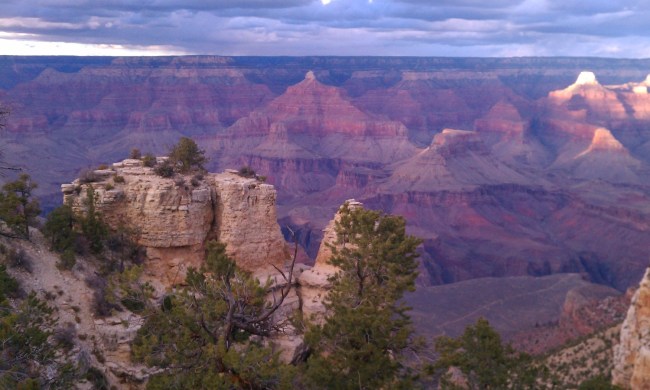The Seattle area is famous for its rainy weather, particularly during the spring. Personally, I love the spring here, and I don’t mind the gloomy weather. It’s therapeutic to hit the trail on a rainy day, when the droplets patter from leaf to leaf. That said, when there is rain, there are also puddles. I’ve had to deal with my fair share of wet hiking socks.
Unfortunately, wet socks often come with blisters and even trench foot if your feet are constantly in a soggy condition over a several-day hike. Cleveland Clinic says that trench foot can happen in cold and damp conditions, causing symptoms such as numbness, pain, redness, and swelling, which restricts blood flow to your foot. Here’s how to prevent it and avoid wet hiking socks.
Tips for preventing wet socks while hiking

Avoid the puddles
Perhaps the most practical advice I could give would be to do your best to avoid the puddles. Even if you do have water-resistant or waterproof footwear, there’s always a chance of water seeping through, so I try not to step in water that’s over an inch deep.
Use gaiters
Waterproof gaiters can help cover the tops of your shoes and lower legs to keep water from sneaking in from the top. Of course, a good pair of rain boots might also do the trick, if you don’t mind hiking in them.
Bring extra socks
If I know that I want to be out there for a while, bringing an extra pair of socks is a great idea. This time of year, you might not be able to predict how muddy the trails will be, so if you accidentally go ankle deep, a spare pair of socks will save you.
Double up on socks
Super wet areas might need a double-sock system. Wear thin, moisture-wicking liner socks, like merino wool, and then wear thicker socks over top as an extra barrier against dampness.
Avoid cotton
When choosing your socks, steer clear of cotton! The only time I would recommend cotton is in desert climates, where you need to retain moisture to keep cool. In a rainy area like Seattle, cotton will get wet within two seconds and take forever to dry.
Hiking sock brand recommendations
Bombas

Bombas has some great merino wool hiking sock options with some high-tech features, including cushiony footbeds, no annoying toe seams, and honeycomb arch support. They also come in classic or fun colorways.
Feetures

America’s number one running sock is also a great option. I love the merino wool options from this brand as well. Feetures include targeted arch compression for more foot support, anatomical fit, and no irritating toe seams.
Darn Tough

A thru-hiker favorite, Darn Tough socks have handled everything from the Appalachian Trail to the Pacific Crest Trail. These socks have soft terry loops underfoot and targeted protection over the ankles and Achilles.
These socks are designed to minimize friction that leads to blisters, especially in damp weather. With merino wool fibers, you’ll keep your feet happy. Just remember to take them out of the wash before you put them in the dryer, or you might just end up having to pass them on to your kids.




